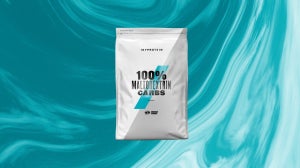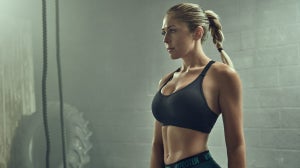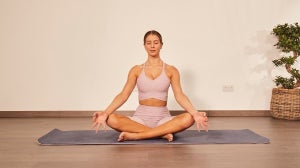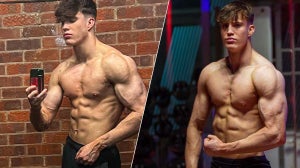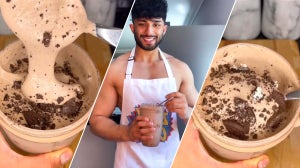
By Musculoskeletal Physiotherapist |
William Harlow
When a young, athletic individual comes into the clinic complaining of a shoulder problem, the rotator cuff is the number one culprit. Damaging this important structure can cause pain and weakness around the shoulder, and lead to chronic problems if not rehabilitated properly.
However, it is a part of the anatomy that is often neglected when it comes to weight training for the shoulders, in favour of ‘hollywood’ deltoids.
Having piston-like delts is great for the beach, but with a few simple exercises added at the end of your routine you can help to cut out the risk of rotator cuff damage and even improve your lifts in other exercises.
What is the rotator cuff?
But first, what is the rotator cuff? Put simply, it is a group of four very important muscles running from the scapula to the humerus, forming a tough, tendinous cuff that keeps the ball-like head of the humerus in the ‘socket’ (glenoid) of the scapula.
The muscles that make up the cuff contract in different patterns, depending on the action of the arm, in an attempt to balance forces and prevent upward movement of the humeral head during elevation of the arm.
Put simply, the cuff keeps the ball in the socket, even when the bigger muscles around the chest, back and shoulder are contracting to move the arm with great force. An impressive feat for such relatively small muscles!
Rotator Cuff: The muscles
The four muscles of the cuff are Supraspinatus, Infraspinatus, Teres Minor and Subscapularis. Infraspinatus and Teres Minor are largely responsible for external rotation at the shoulder, while Subscapularis is an internal rotator of the shoulder.

As I previously mentioned, training these muscles will not only ward off rotator cuff injury but increase your big lifts too. As Subscapularis works synergistically with Pec Major, strengthening this muscle is important if you want to maximise your bench press.
Similarly, the external rotators are highly active during downward pulling exercises, like chin ups or lat pull downs; adding strength here will allow you to crank out a few more reps on the pull-up bar.
Anyway, that’s enough of an anatomy lecture for one day; how do you go about strengthening them?
#1 Eccentric external rotations, high load

Balance your elbow on your knee holding a medium-heavy weight. Use your opposite hand to help you rotate the load backwards.
Then perform the eccentric phase of the movement SLOWLY with just the loaded arm – control the downward movement of the dumbbell for the count of 5 seconds.Slow eccentrics have been shown to add serious strength and having the arm at this angle also provides a functional component.
Sets and reps: 4-6 X 4#2 External rotation in 90 degrees abduction, with cable.

Keep your elbow and shoulder at 90 degrees and rotate the arm so that your fist moves backwards. Remember to keep the head upright and try not to let your elbow fall forwards. External rotation in this position places the majority of emphasis on the Infraspinatus, a muscle with the vital role of counteracting the bigger internal rotators. Performing the exercise with the arm in this position is also great for improving chin-ups.
Sets and reps: 15 X 3#3 Prone Y-Lifts
While this exercise at first glance looks relatively easy… you’ll only need light weights, trust me!

Either in the position shown or flat, raise your arms in the ‘Y’ position as far above your head as you can. At the top of the motion, squeeze your shoulder blades together before slowly bringing your arms back down. That’s one rep.
This exercise hits Supraspinatus hard, one of the most commonly weakened rotator cuff muscles that I see in clinic.
Sets and reps: 10 X 3#4 Eccentric internal rotations

Holding the dumbbell in the position shown, allow the arm to rotate away from the body towards the floor SLOWLY (5 seconds).
As you’re using a large weight here too, you can use the other arm in the concentric (going up) phase of this movement to assist the working arm.
Sets and reps: 4-6 X 4Take Home Message
So there are some of the exercises I would recommend to increase cuff strength, put into a short programme that you can perform at the end of a workout. As the cuff has been shown to be made up of roughly a 50/50 mix of fast and slow-twitch muscle fibres, I have recommended a mixture of rep ranges and loads to work each fibre type.
I would suggest picking two exercises out of the four, and completing this finisher once or twice per week to add significant strength to your cuff, decrease the risk of shoulder injury and add weight to your compound, multi-joint lifts.
So there you have it, a great finisher to tap into the power of the cuff and allow extra confidence in big lifts!
Our articles should be used for informational and educational purposes only and are not intended to be taken as medical advice. If you're concerned, consult a health professional before taking dietary supplements or introducing any major changes to your diet.


